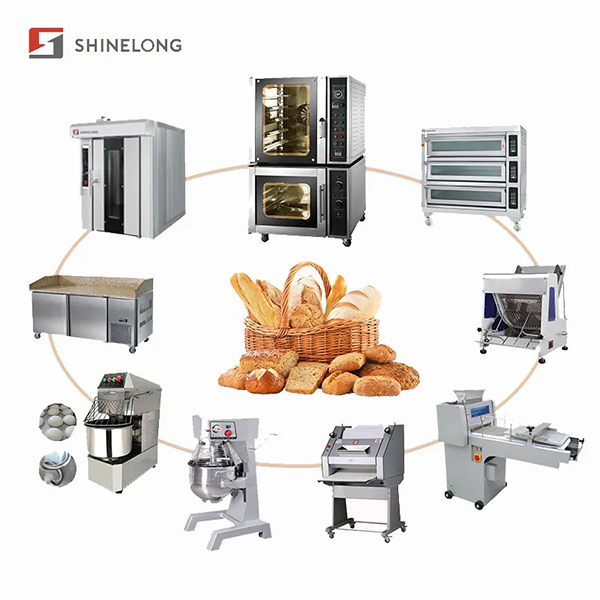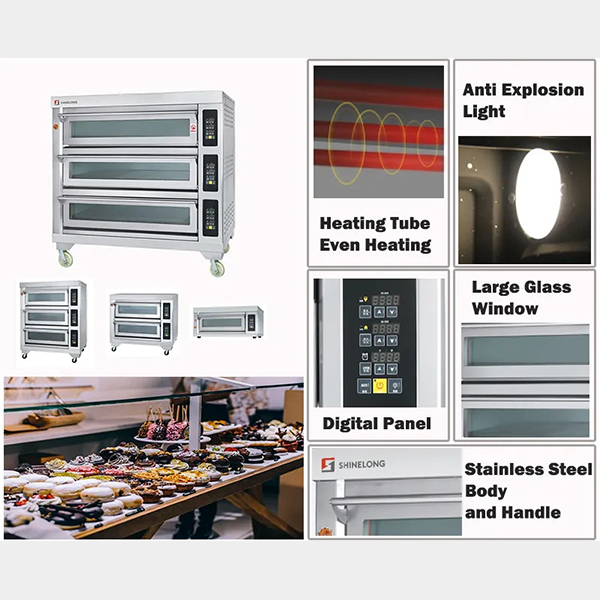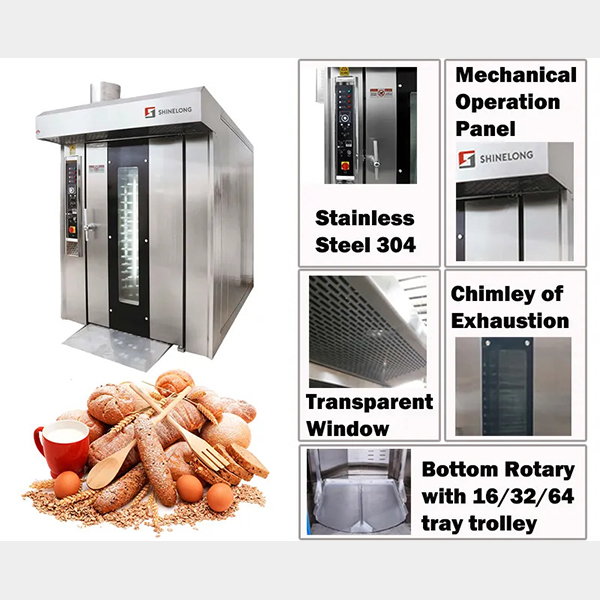Rotating Rack Oven: Bakery Production Line Essential
Product features
The rotating rack oven is an essential piece of equipment in any bakery production line, providing even baking and consistent results. Its core attribute lies in the ability to rotate racks, ensuring even heat distribution for perfectly baked goods. The extended attributes include its large capacity, user-friendly controls, and durable construction, making it a valuable addition to any commercial bakery.
We serve
We serve with our Rotating Rack Oven, an essential component for any bakery production line. Our oven offers precise temperature control and even baking, ensuring consistent and delicious results every time. With its rotating rack design, it maximizes space and efficiency, allowing you to bake more products in less time. Whether you are a small bakery or a large-scale operation, our Rotating Rack Oven is designed to meet your production needs. Trust in our quality craftsmanship and dedication to serving the baking industry with reliable and high-performing equipment. Elevate your bakery production with our Rotating Rack Oven today.
Enterprise core strength
At our bakery, we serve up delicious treats with the help of our Rotating Rack Oven. This essential piece of equipment is perfect for high-volume production, ensuring consistent and even baking every time. With durable construction and user-friendly controls, our oven is designed to streamline the baking process and increase efficiency in your kitchen. We serve up quality and reliability, allowing you to focus on creating mouthwatering pastries and breads for your customers. Trust in our Rotating Rack Oven to meet your production needs and help your bakery operation run smoothly.
Product Introduction
Bakery Production Line
Application
The style and type of bread dictate the dough system to use as well as the processing conditions during mixing, makeup, and baking. A baker would not like to produce ciabatta with a close crumb structure, or to produce a loaf of white pan bread with an open crumb structure and texture like a ciabatta.
All steps in bread processing are important for a successful operation, but most bakers would agree that the three truly vital process steps are mixing, fermentation and baking. They are commonly described as the heart and cornerstone of breadmaking operations and can also determine the finished product characteristics, both internally and externally.
Mixing
The objective is the blending and hydration of dry ingredients, air incorporation, and gluten development for optimum dough handling properties. Variables to monitor and control include mixing time, energy input, dough temperature:
Mixing time: a function of flour strength, its protein, damaged starch and non-starch polysaccharides, and bran particle content. Other factors include mixer speed, mixing arm design, dough size in relation to mixer capacity, adequacy of refrigeration system (dough temperature), and delayed sugar/fat/salt addition.
Mixing equipment: vertical (planetary), spiral (open and closed for vacuum mixing), horizontal, continuous (open and closed).
Process specifications: 9–15 minutes at high speed in horizontal mixers. Final dough temperature should be 76–82°F (25–28°C).
Fermentation
The objective is yeast growth, production of CO2, ethanol, and organic acids, development of flavors and aromas, and modification of dough handling properties. Variables to monitor and control include fermentation time, temperature, titratable acidity (TTA), pH, and microbial count:
Fermentation time: controlled by the temperature of dough, sponge, starter or pre-ferment, hydration level (free water), pH, osmotic pressure, yeast food (amino acids, minerals, fermentable sugars) and yeast level (or lactic acid bacteria count).
Fermentation equipment: troughs in the fermentation room, closed tanks, open tanks, benches.
Process specifications: 1–20 hours (at room conditions), depending on the dough system used. The temperature in fermentation rooms is typically set between 75–85°F (24–29°C) with relative humidity (RH) of 60–80%.2
Makeup
The makeup stage mainly encompasses four operations:
Dividing
Rounding
Intermediate proofing
Sheeting and moulding
The divider cuts the bulk dough into single pieces of proper weight (with as little stress exerted on the dough as possible) so that these can be rounded and rested prior to taking their final shape. The divider must process the entire dough load quickly to prevent excessive gassing that creates scaling errors.
The sheeter and molder encompass the sheeting stage, curling chain, pressure board, and guide bars. These influence the gas bubble structure, shape, and length of the dough piece to place in the pan. The molder should be adjusted to achieve the desired shape with a minimum amount of pressure and stress on the dough to avoid damaging the cell structure obtained during mixing and fermentation.
Baking
The objective is to convert raw dough into bread, the set structure of the product, crust, and crumb formation, kill-step, and shelf-life extension. Variables to monitor and control include temperature, and time (governed in continuous ovens by conveying speed). Other relevant variables include heat flux (burners), humidity (dampers), and air velocity or flow.
Baking time: controlled by oven temperature, conveying speed, initial (proofed dough) and final product temperature, heating pattern, bake loss, product load, and formulation.
Baking equipment: direct-fired oven, indirect-fired oven, electric oven, rack oven, reel oven, conveyorized, tunnel, hybrid, and impingement oven.
Process specifications: 10–20 minutes at 400–420°F (204–216°C) (heating pattern in different ovens must be equivalent for comparable results).



Frequently Asked Questions about professional kitchen supplies
Since Shinelong was established in Guangzhou in 2008, we have made great strides in the fields of commercial kitchen planning and kitchen equipment manufacturing.
IF YOU HAVE ANY QUESTION,PLEASE CONTACT US.
WhatsApp: +8618902337180
WeChat: +8618924185248
Telephone: +8618924185248
Fax: +86 20 34709972
Email: info@chinashinelong.com
After-Sales Contact
Telephone: +8618998818517
Email: service@chinashinelong.com
Add: No. 1 Headquarters Center, Tian An Hi-tech Ecological Park, Panyu Avenue, Guangzhou, China.
























